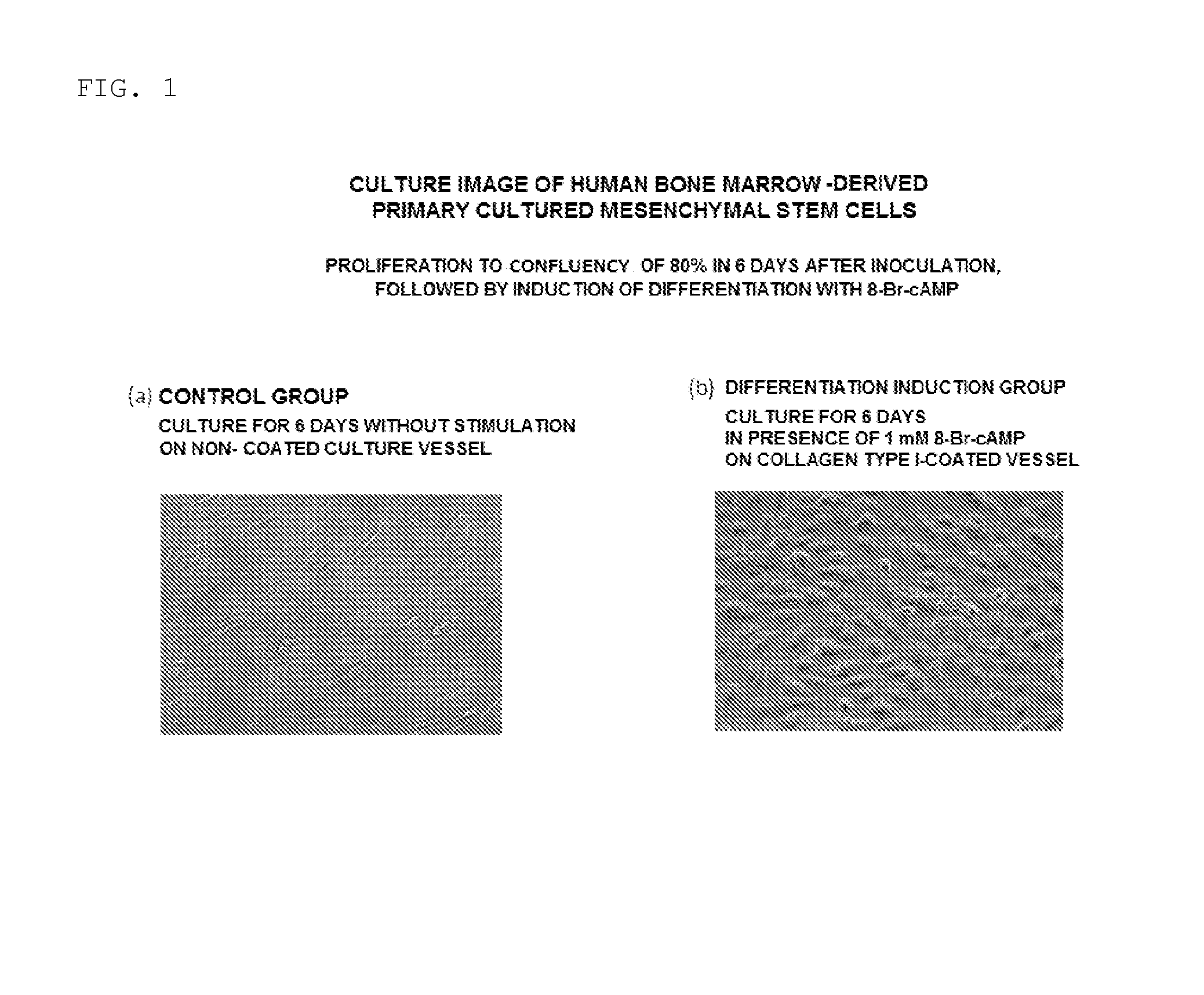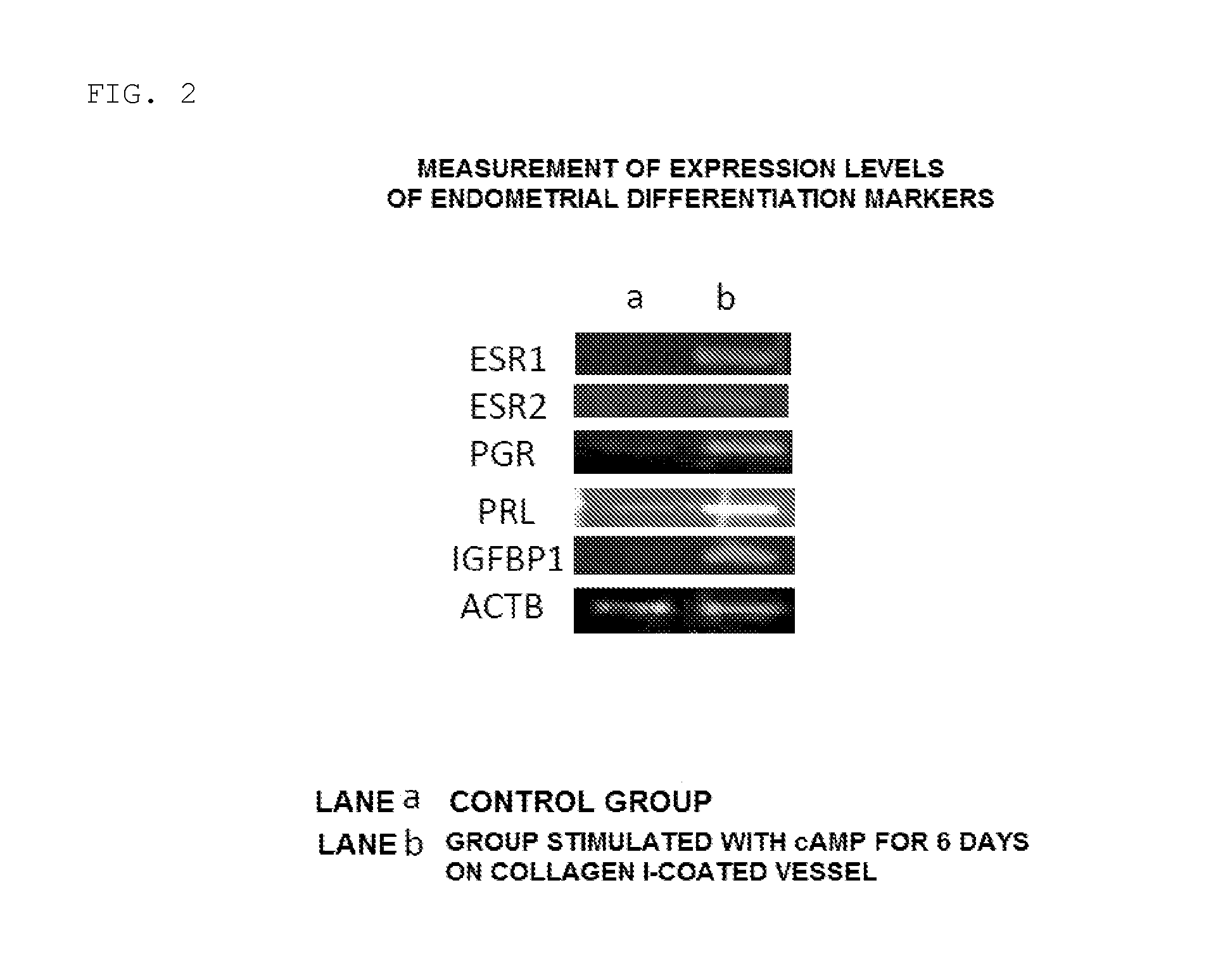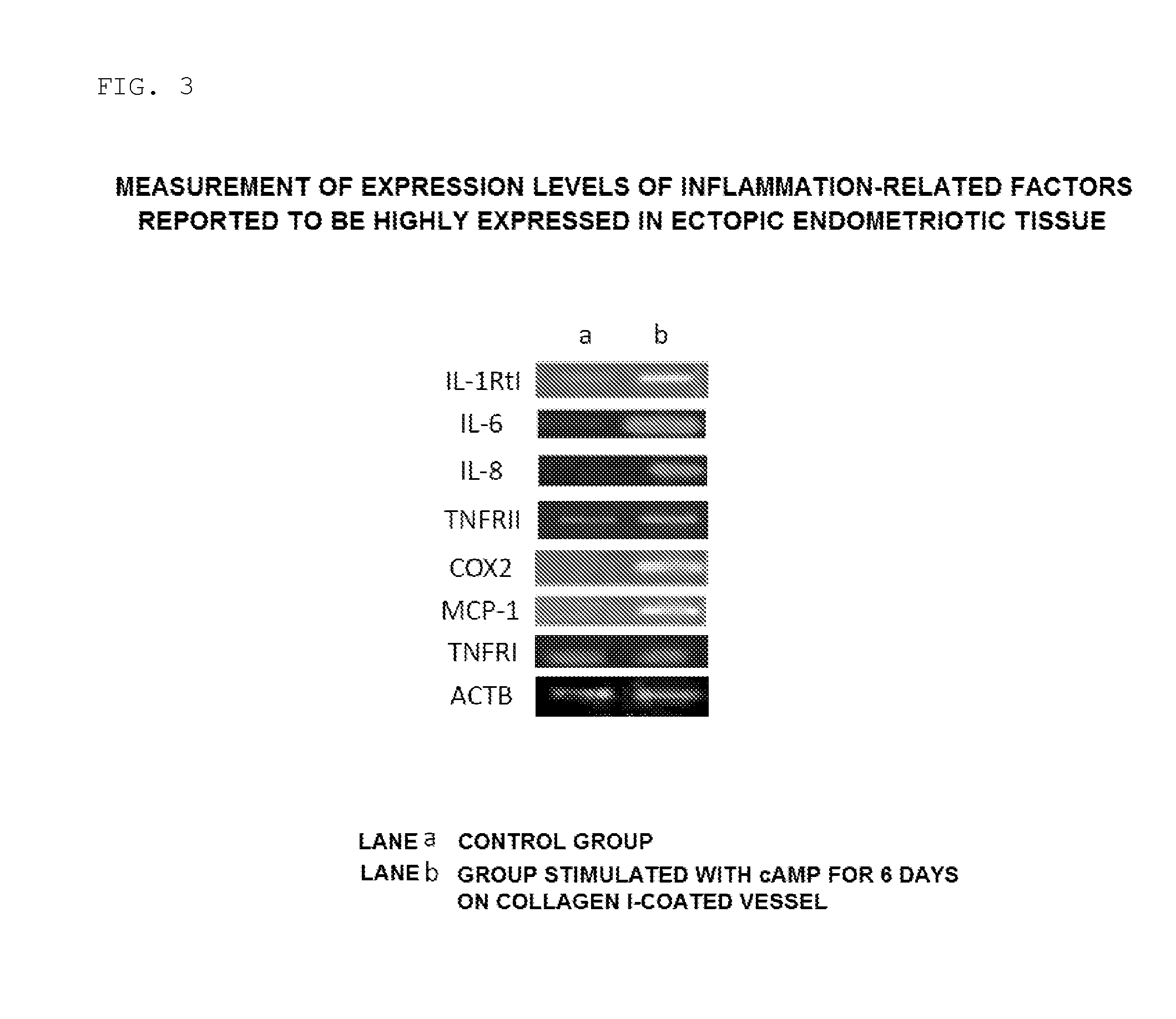Method For Creating Endometriotic Cells And Endometriosis Model Animal
- Summary
- Abstract
- Description
- Claims
- Application Information
AI Technical Summary
Benefits of technology
Problems solved by technology
Method used
Image
Examples
example 1
Production of Endometriotic-Like Cells
[0053]In this Example, endometriotic-like cells were produced from mesenchymal stem cells. Thus, procedures of the production are described in detail.
[0054]Step (1) Culture of Mesenchymal Stem Cells
[0055]In this step, 2×105 human bone marrow-derived primary cultured mesenchymal stem cells (Lonza, Cat. No. PT-2501) were added to 10 ml of a low-carbon-source proliferation culture medium (shown below), inoculated into a culture vessel having a diameter of 100 mm and having a surface coated with collagen type I (derived from rat tail, BD Biosciences, Cat. No. 354236), and cultured for 6 days to a confluency of from 70% to 80% at 37° C. in the presence of 5% CO2. The culture medium was exchanged every 2 days to 3 days.
[0056]In this Example and Experimental Examples shown below, and Examples shown below, the “low-carbon-source proliferation culture medium” refers to a culture medium prepared by supplementing low-glucose Dulbecco's Modified Eagle's Med...
experimental example 1-1
Analysis of Cells Induced to Differentiate in Step (2)
[0063]In this Experimental Example, the cells induced to differentiate in the step (2) were confirmed and analyzed for their cell morphology, expression of endometrial differentiation markers, and expression of endometriosis-related inflammatory factors (genes and proteins).
[0064](i) Cell Morphology
[0065]The morphology of the cells on day 6 after the start of the induction of differentiation in the step (2) was observed with a light microscope (magnification: 10×). As a result, as shown in FIG. 1(b), it was observed that, in the cells induced to differentiate with the medium supplemented with 8-Br-cAMP, the cells protruded to exhibit a round shape as compared to the control shown in FIG. 1(a), and had morphology similar to that of normal endometrial stromal cells decidualized in vitro.
[0066](ii) Expression of Endometrial Differentiation Markers
[0067]The cells on day 6 after the start of the induction of differentiation in the ste...
experimental example 1-2
Analysis of Endometriotic-Like Cells Produced in Step (3)
[0072]In this Experimental Example, the cells produced in the step (3), i.e., the cells induced to differentiate in the step (2) and then cultured for 2 days (total number of days for culture: 14 days) with a low-carbon-source proliferation culture medium free of 8-Br-cAMP through medium exchange again were analyzed.
[0073](i) Cell Morphology
[0074]Cell morphology was observed with a light microscope (magnification: 10×) in the same manner as in the above-mentioned section (i) of Experimental Example 1-1. The morphology of a control group (i.e., cells obtained after human mesenchymal stem cells have been cultured for 14 days with a low-carbon-source proliferation culture medium free of 8-Br-cAMP on a culture vessel not coated with extracellular matrix) is shown in FIG. 5(a), and the morphology of a differentiation induction group is shown in FIG. 5 (b). As a result, as shown in FIG. 5 (b), it was confirmed that, when the cells w...
PUM
 Login to View More
Login to View More Abstract
Description
Claims
Application Information
 Login to View More
Login to View More - R&D
- Intellectual Property
- Life Sciences
- Materials
- Tech Scout
- Unparalleled Data Quality
- Higher Quality Content
- 60% Fewer Hallucinations
Browse by: Latest US Patents, China's latest patents, Technical Efficacy Thesaurus, Application Domain, Technology Topic, Popular Technical Reports.
© 2025 PatSnap. All rights reserved.Legal|Privacy policy|Modern Slavery Act Transparency Statement|Sitemap|About US| Contact US: help@patsnap.com



